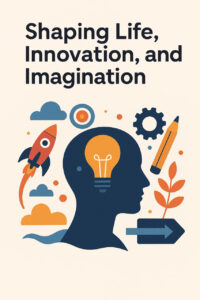The Rise of Green Tech – How Sustainable Technology is Shaping a Cleaner Future

Technology and sustainability are no longer separate ideas—they are now deeply connected forces shaping the future of our planet. Green tech, also known as sustainable technology, focuses on reducing environmental impact through innovation, efficiency, and renewable solutions. In 2025, this sector is growing faster than ever, with industries, startups, and governments investing billions into eco-friendly solutions that promise a more sustainable world.
What Is Green Tech and Why Does It Matter?
Green tech refers to technologies designed to mitigate or reverse the effects of human activity on the environment. This includes innovations in clean energy, waste reduction, carbon capture, water purification, and sustainable manufacturing. As the world faces the dual challenges of climate change and resource depletion, green technology has become a vital part of global economic and environmental strategies.
For example, renewable energy sources like solar and wind power are replacing fossil fuels in many regions. Electric vehicles (EVs) are cutting down carbon emissions from transportation, while smart grids make energy consumption more efficient and transparent. These technologies are not just environmentally friendly—they also create new jobs, reduce long-term costs, and support resilient infrastructure.
Practical Tip:
For businesses exploring green tech solutions, start by conducting an energy audit. Understanding where energy is wasted can reveal opportunities for significant cost savings and sustainability gains.
Key Innovations Driving the Green Tech Revolution
Several groundbreaking technologies are leading the transition toward a cleaner economy. Each brings unique benefits and challenges, but all share one common goal: a sustainable future.
1. Renewable Energy Systems
Solar, wind, hydro, and geothermal power are now mainstream. The International Energy Agency (IEA) reported in 2025 that renewables supply over 35% of global electricity—a record high. The cost of solar panels has dropped by more than 80% in the past decade, making clean energy more accessible than ever.
Meanwhile, innovations like floating solar farms and offshore wind turbines are maximizing renewable potential in areas once considered unsuitable. Smart grids integrate these sources efficiently, balancing supply and demand in real-time.
2. Energy Storage and Smart Grids
One of the biggest challenges in renewable energy has been storing excess power. Recent advances in battery technology—such as solid-state batteries and grid-scale lithium-ion storage—are solving this issue. These systems allow renewable power to be stored during peak generation and used when demand rises, ensuring a stable energy supply.
Smart grids, enhanced with artificial intelligence (AI) and IoT (Internet of Things), enable real-time monitoring of energy consumption, improving efficiency and preventing outages. They also empower consumers to track and optimize their own usage.
Practical Tip:
Homeowners can consider installing smart meters to gain better control over energy use and reduce monthly utility costs while supporting grid stability.
3. Sustainable Transportation
Electric vehicles have moved from niche to mainstream. In 2025, global EV sales surpassed 18 million units, driven by improved charging infrastructure and longer battery ranges. Cities are investing in electric buses, trains, and even delivery drones to reduce emissions in urban areas.
Hydrogen fuel cell technology is also emerging as a promising solution for heavy transport such as trucks and ships, where batteries are less practical. Combined with AI-driven logistics systems, transportation is becoming cleaner and more efficient than ever.
4. Circular Economy and Eco-Manufacturing
Green tech extends beyond energy—it also redefines how products are designed, produced, and recycled. The concept of a circular economy focuses on keeping materials in use for as long as possible, reducing waste, and minimizing new resource extraction. Companies are adopting biodegradable materials, modular designs, and 3D printing to reduce their environmental footprint.
For example, some smartphone manufacturers now use recycled aluminum and rare-earth materials to produce devices that are easier to repair and recycle. In construction, sustainable materials like hempcrete and recycled steel are gaining popularity for their durability and low carbon emissions.
Practical Tip:
Consumers can support eco-friendly manufacturing by choosing products made with recycled or biodegradable materials and supporting brands that disclose their sustainability practices.
Challenges Facing Green Tech Adoption
Despite its rapid growth, the green tech sector faces several challenges that need careful navigation:
- High initial costs: While long-term savings are substantial, upfront investment remains a barrier for some individuals and small businesses.
- Infrastructure limitations: Many regions still lack the grid or logistics capacity to support large-scale renewable integration.
- Policy uncertainty: Inconsistent environmental policies and incentives can slow innovation and adoption rates.
- Material dependency: Some green technologies rely on rare minerals like lithium or cobalt, which have their own environmental and ethical concerns.
Addressing these challenges requires global cooperation, innovation in materials science, and policy support to ensure fair access and sustainable supply chains.
Practical Tip:
For investors or policymakers, focusing on education and community incentives can accelerate green tech adoption while building local expertise.
The Role of AI and Data in Sustainable Technology
Artificial intelligence and big data analytics are critical enablers of modern sustainability. AI helps predict energy demand, optimize logistics, detect leaks in water systems, and even monitor deforestation via satellite imagery. Predictive algorithms ensure that renewable energy systems operate at maximum efficiency, reducing waste and cost.
In manufacturing, machine learning tools analyze production processes to identify inefficiencies and recommend improvements. These data-driven insights turn sustainability from a moral goal into a measurable performance metric.
Practical Tip:
Organizations adopting green tech should integrate AI-based analytics to track real-time performance and environmental impact. This helps in meeting regulatory requirements and sustainability targets.
What’s Next for Green Tech?
The next decade will likely see sustainable technology move from innovation to necessity. Emerging trends such as carbon-negative materials, bioenergy with carbon capture (BECCS), and decentralized microgrids will redefine how energy is produced and shared.
In addition, global collaboration is accelerating. Countries are joining forces to share research, fund clean tech startups, and develop cross-border energy networks. Green tech is no longer just about saving the planet—it’s becoming a cornerstone of economic growth and resilience.
Conclusion: Building a Sustainable Future Together
Green tech is not just a trend—it’s a transformation. Every solar panel, electric vehicle, and recycled product represents a step toward a cleaner and smarter world. The momentum in 2025 shows that sustainable technology is not only good for the planet but also for economies, communities, and future generations.
What’s your experience with green or sustainable technology? Are you already using eco-friendly products or renewable energy solutions? Share your thoughts in the comments below and join the conversation on building a greener future.
Call to Action: Stay informed about new green tech breakthroughs and explore local sustainability initiatives. Every small change contributes to a larger impact—start today.



